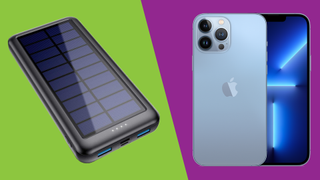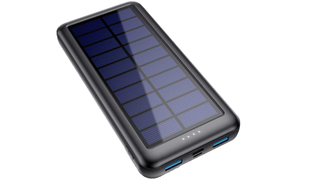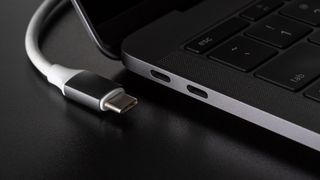Don't make the same mistake I did when I bought a new USB power bank charger
Opinion: Why have USB-C when it can't charge my iPhone?

We've all been in that situation where your smartphone is low on charge, and there's no power socket nearby, which is where a power bank can come in.
These usually have a high amount of power that could charge your iPhone or Pixel device, around five times over. They've saved me countless times, and after owning one from Anker, I decided to upgrade to one with higher capacity and more ports.
To have one that could also charge my DualShock 4 controller when needed was going to save me in many more situations, so I wanted to buy one that had a port for almost every occasion.
However, after a day of owning the new model, I was disappointed to find that the USB-C and mini-USB ports were there to solely charge the power bank, leaving only two of the four ports available to charge my devices.
Soon after, I began the process of returning it, and wondered if there were other power banks that worked the same way.
How did I get here?

I bought a Kilponen Solar Power Bank 26800mAh, mainly due to it being lighter in weight, alongside a slightly higher capacity than the 20000mAh I owned before from Anker.
Having a solar option to help recharge was a nice touch I thought, especially for adventures planned across the year, and was happy once it arrived.
Get daily insight, inspiration and deals in your inbox
Get the hottest deals available in your inbox plus news, reviews, opinion, analysis and more from the TechRadar team.
Lighter, more capacity - you'd think that I'd be happy with this, and that would be the end.
But the day after charging it up and putting it in my bag, my iPhone 13 Pro needed a recharge as I forgot to plug it in the afternoon before. And, like the hundreds of times before, went to grab my USB-C to Lightning cable, plugged it into the power bank and the iPhone, and waited for the prompt to appear.
But no vibrate or alert occurred on the iPhone. So I plugged in my USB-C to USB-C cable to see if the MacBook Pro 14-inch would charge from it, but instead the laptop was charging the Power Bank.
It wasn't until I looked at the small print on its product page, which states that only two ports, the two USB 3.0 ports, can charge your devices.
You're probably thinking - why don't you know this about power banks?
Well, my previous one from Anker featured a USB-C port that could charge my devices, so I thought it was a standard across all power banks.
Make sure to read the small print

There's a bunch of devices that I always have to keep in mind when I look at a power bank, as my bag has the space to store them all:
- MacBook Pro 14-inch
- PS Vita
- Nintendo New 3DS XL
- Charging wires
- Wireless Mouse
- Sony Dual Shock 4 Controller
- Sony WH-1000XM3
While most of these can charge through a USB port, USB-C wires are becoming more common, which is why most of the cables in my bag are only USB-C.
Looking into power banks with USB-C ports, it wasn't until I spotted that the ones that could charge devices through this port, had PD (Power Delivery) alongside the product name.
These are the ones to look out for - as long as the product pages state that all ports can charge, you're good to go.
However, let's be clear - buying power banks should be a straightforward affair. If you see one that has countless ports, with a big capacity and a low price, you're likely going to buy it just from the description.
That's what I did, but I recommend that you don't do this. Read the reviews for these power banks, go through the specs, and don't do the rookie mistake that I did for something as simple as this.

Daryl had been freelancing for 3 years before joining TechRadar, now reporting on everything software-related. In his spare time he's written a book, 'The Making of Tomb Raider', alongside podcasting and usually found playing games old and new on his PC and MacBook Pro. If you have a story about an updated app, one that's about to launch, or just anything Software-related, drop him a line.
